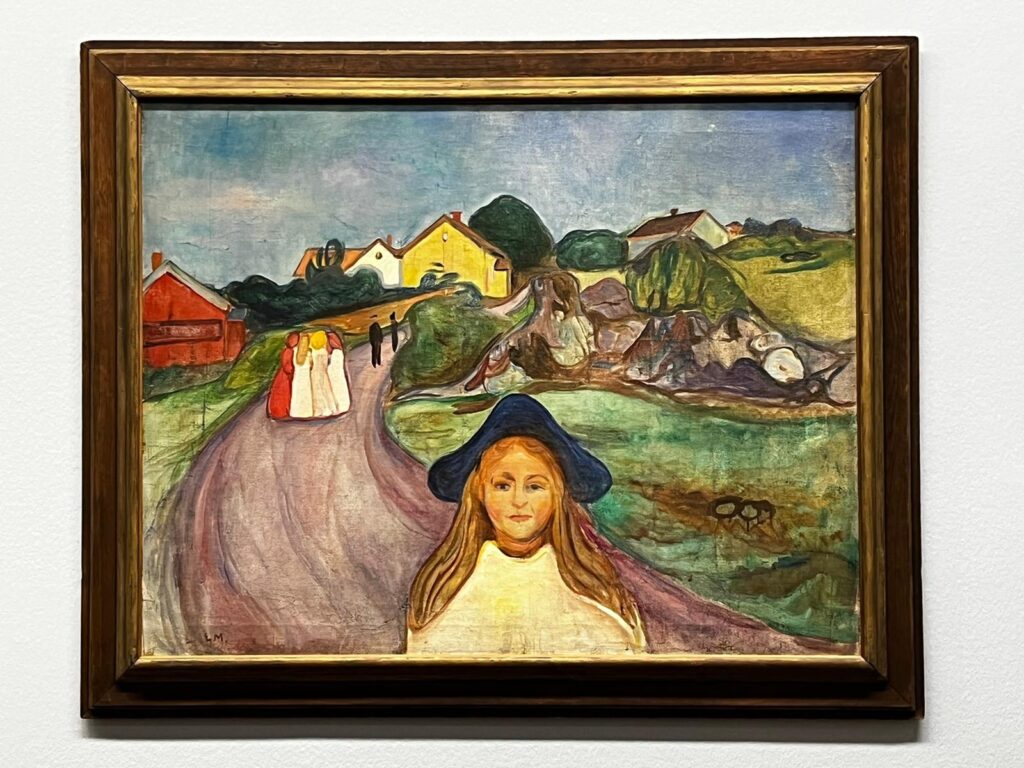The exhibition in the marvellous Albertina in Vienna is dedicated to a collection of works by Edvard Munch depicting various stages of his lifetime. It also gathers the artworks of 7 other artists who were either his contemporaries or later followers who found major inspiration in Munich’s works.
The early works of Edvard Munch are like zephyr – light yet puffy and full of structure. Some resemble Monet’s portrayals of sea views and nature, paired with Scandinavian motifs.


However, walking through the beautifully curated exhibition, you can see how life had not spared the artist – the appearance of darker colours, heavy-to-view human forms and more aggressive lines soon came into the artists paintings.

Briefly before WWI, almost all of his solo and group exhibition appearances at various Salon’s shows across Europe did not go well, with critics eating him away.

Munch wasn’t very lucky in the relationship department too. One of his most dramatic relationships cost him upper part of one of his middle finger that was shot off during a fight with the woman he loved. This and other similar experiences didn’t do good to his mental condition + the alcoholism. In general, I could t stop having the feeling that the exhibition positioned Munch as the master of disaster, the lonely and alone one.
What I left the exhibition with, was a feeling of a slight aggression. His lines are so determined and clear yet also very bold and forthcoming. They are not subtle.


Thankfully his works did find support in the minds and hearts of his contemporaries as well as later followers. The exhibition offers works of Darunter Georg Baselitz, Andy Warhol, Miriam Cahn, Peter Doig, Marlene Dumas, Tracey Emin and Jasper Johns – all being either fellow artists of that time, or nowadays painters who took great deal of inspiration from Munch’s works. There were many artworks, here are some that caught my attention.




I didn’t know that Andy Warlhol was such a fan of Edvard Munch. He had purchased four of his works and replicated some of them in his own work. In the exhibition room there were 6 works dedicated to this same painting – “Sream”, done in different colours.

One of the writings on the walls mentioned that Munch wasn’t fond of the then governing political power mostly due to the fact that the Norwegian Socialistic party believed him to be a degrading artist, not something good for the public.
The last room shows a self portrait he did closer to the end of his life, or so he believed. The green profile is meant to be his shadow indicating a soon arrival of death.

This exhibition was one of those that you need to come back to, after you digest it’s content after the first visit.



0 comments on “Edvard Munch at Albertina”